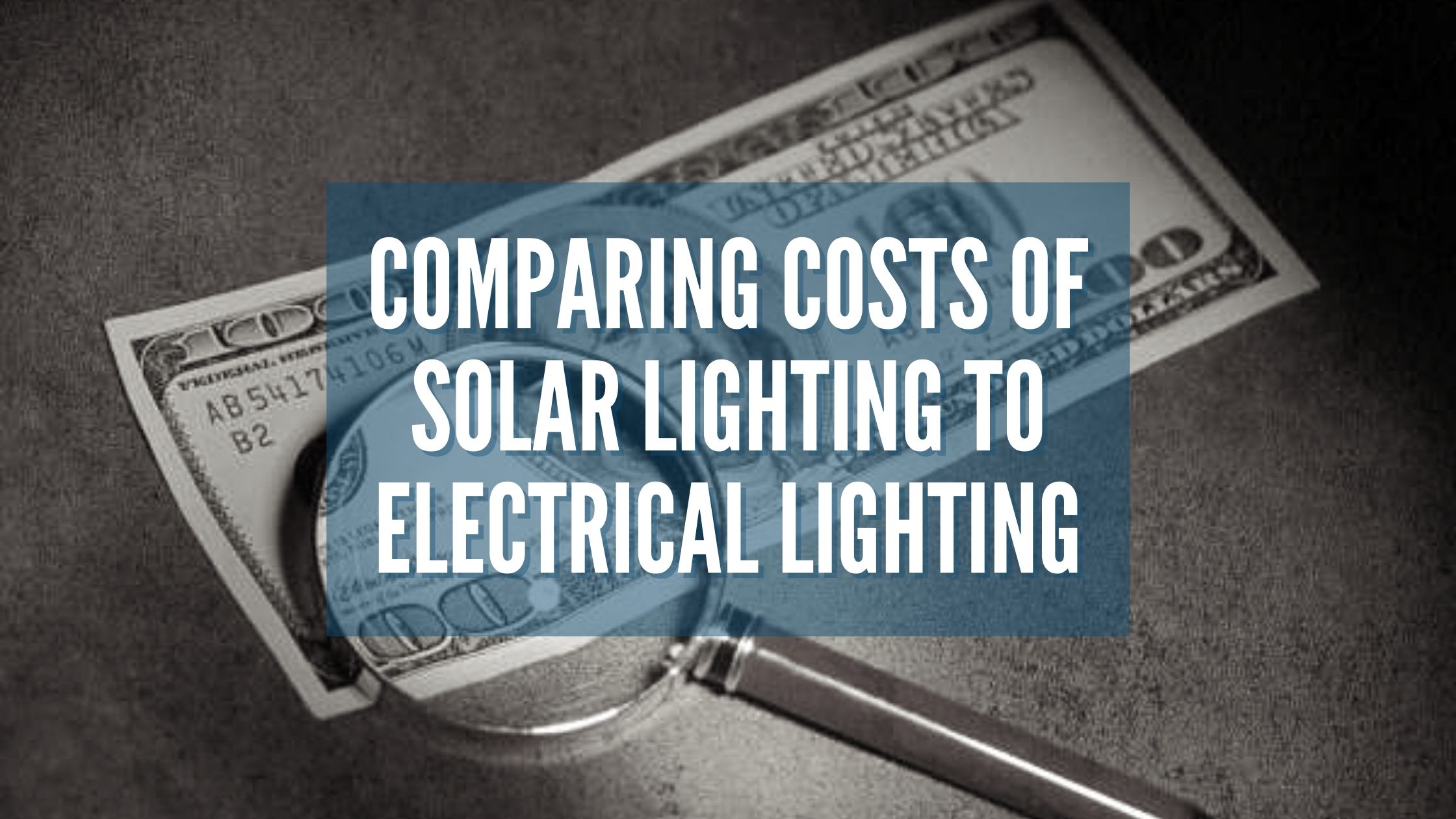Comparing costs between off-grid solar lighting and traditional electrical grid-powered lighting can often be confusing and seem like a daunting task. Upfront purchase costs, maintenance and utility costs, government incentives and rebates, and environmental costs all need to be taken into account when making these calculations. Once a list of all costs can be prepared for comparison between the two options, the task becomes much less daunting.
Calculate Purchase and Installation Costs
The purchase costs are relatively straightforward, although one needs to keep in mind that when purchasing solar lighting, all future power generation is being purchased upfront. More on that later.
The installation costs can be a little trickier to identify. The major costs associated with installing solar lighting will be erecting the pole and mounting the solar lighting equipment onto the pole. This will, of course, be multiplied on a per pole basis for the entire project. As more poles are installed, the cost per pole should be lower due to economies of scale.
The parts of the total cost of installing traditional lighting can often be hidden. As with solar lighting, one needs to consider the costs of erecting the poles and mounting the equipment. One also must take into account the cost of bringing the electrical grid to each of the poles. This will include the purchase and installation of step-down transformers, electrical wire, and conduit. Running the conduit can often be an expensive proposition since this involves the labor of trenching plus the purchase of pricy copper wire. Often specialized machinery is needed for this trenching process.
Calculate Long-Term Recurring Costs
These include maintenance and utility costs. For the most part, the only recurring cost for solar lighting will be battery replacement approximately every 5 years. In the majority of cases, solar lighting uses LED lamps which rarely need to be replaced. Also, all of the power generation was purchased upfront, so no utility costs exist.
Traditional lighting will normally make use of some form of HID lamp technology. These lamps will need to be replaced regularly. Also, the owner will need to pay a monthly utility bill to power the traditional lighting.
Consider Government and Non-Government Incentives for Solar Lighting
Many tax credits, rebates, and deductions are available for the purchase and installation of solar lighting at both the Federal and state levels. Most of these tax incentives can be found in the Database of State Incentives for Renewables and Efficiency.
Also, numerous grants may be available from various agencies for solar lighting projects to offset a portion or, at times, all of the project costs. Also, various government agencies or even some corporations may require certain initiatives to reduce the carbon footprint of facilities or projects. Solar lighting can be used to satisfy these requirements eliminating the need for the expense of additional carbon-reducing projects.
Consider Environmental Costs or Savings
The owner of each project will need to determine the importance of these costs. Solar lighting is a net-zero technology when it comes to the carbon footprint. Traditional lighting consumes energy from the electrical grid, thus adding to the carbon footprint. The environmental savings associated with solar lighting over traditional lighting will need to be calculated, and their significance identified.
When first assessing the overall costs of a solar lighting project vs. traditional lighting, the task can seem more like a puzzle. This puzzle can easily be solved by following the steps outlined above and creating a framework to view the project costs in their entirety.



